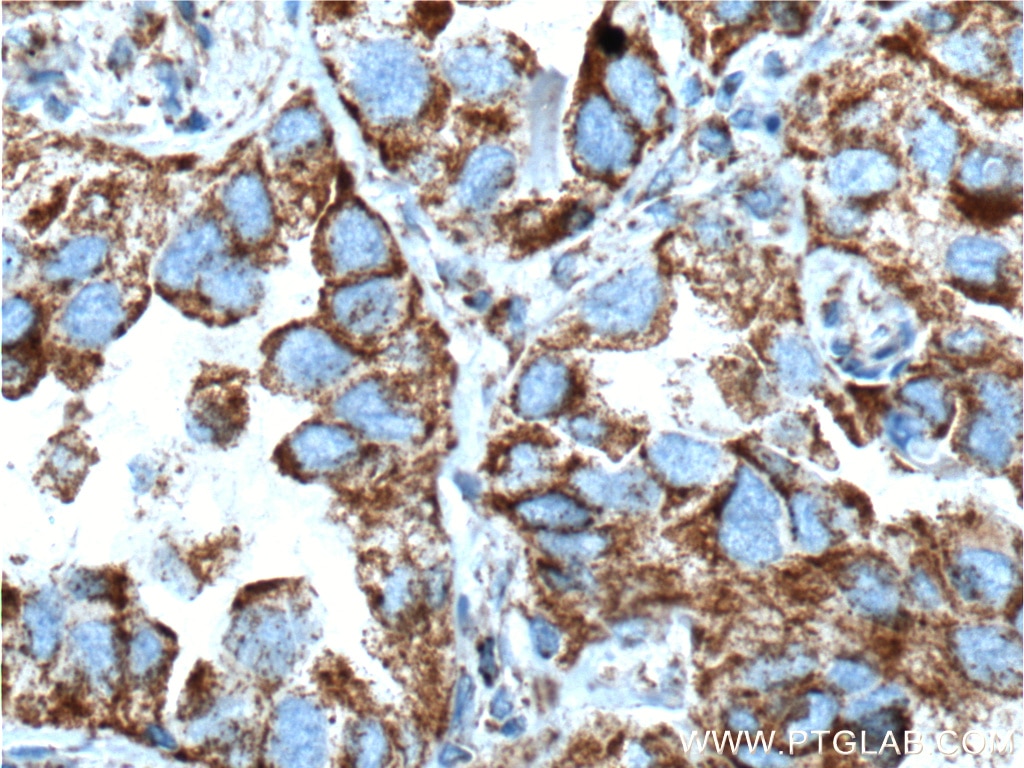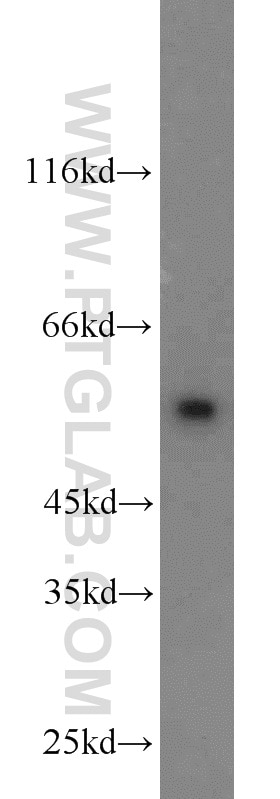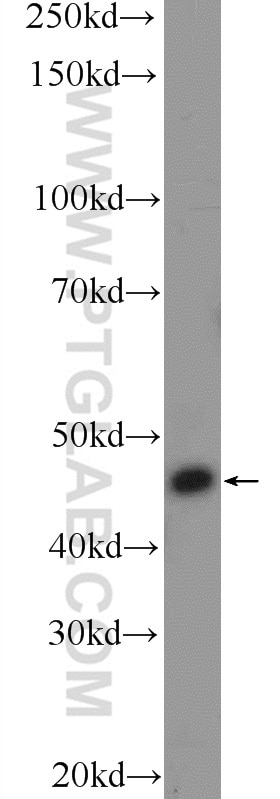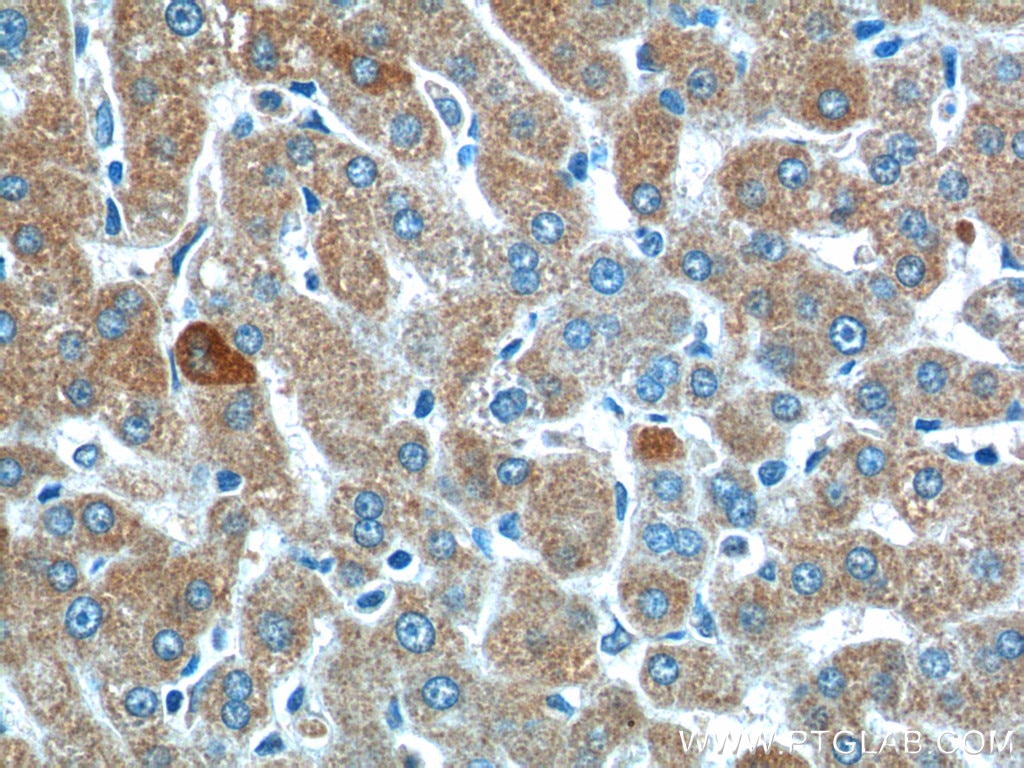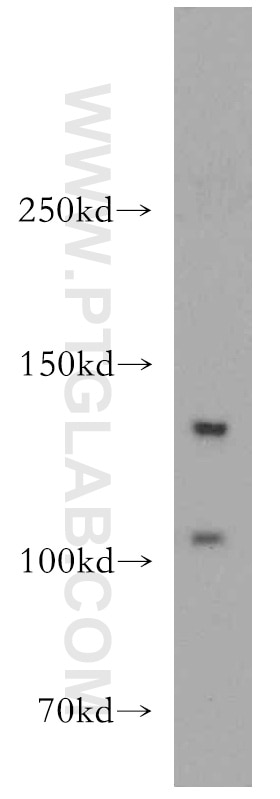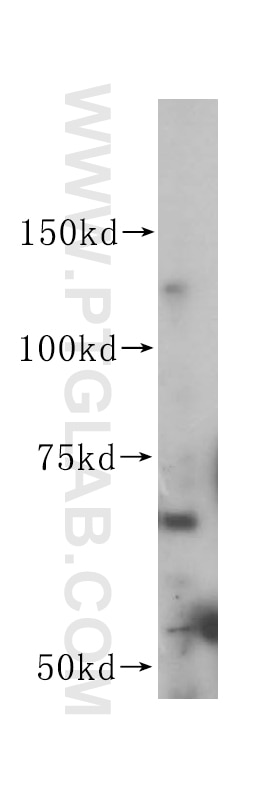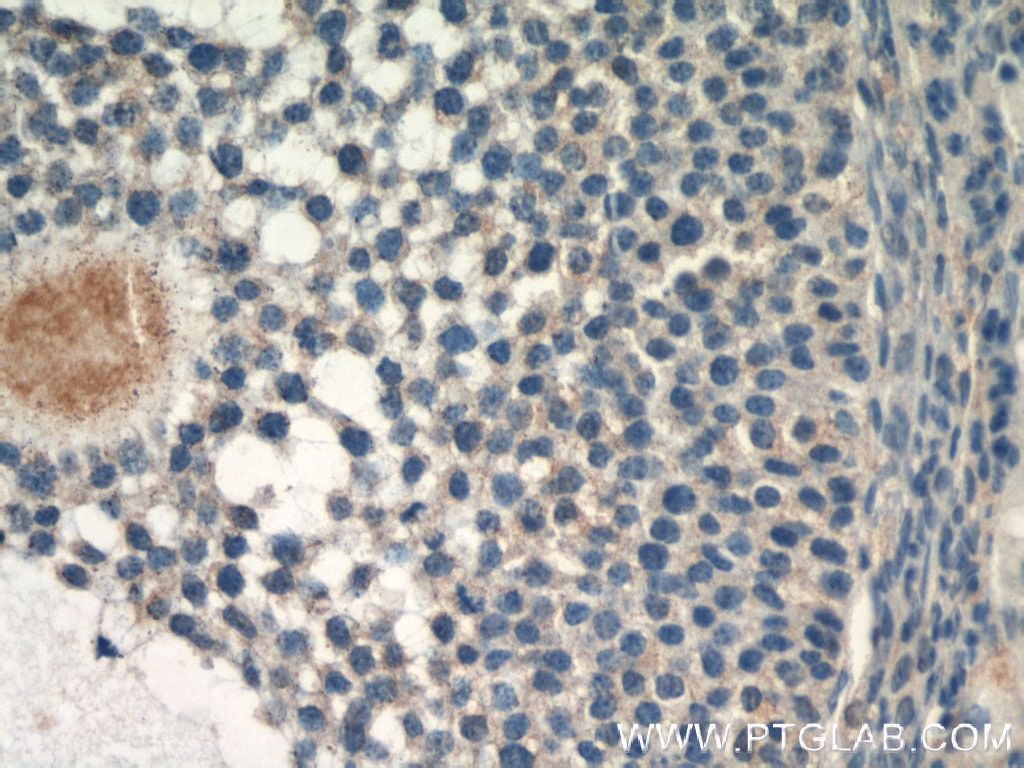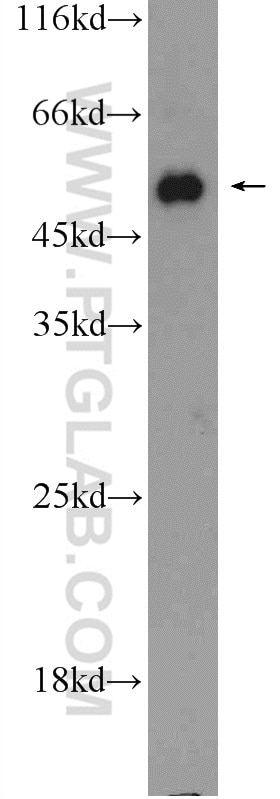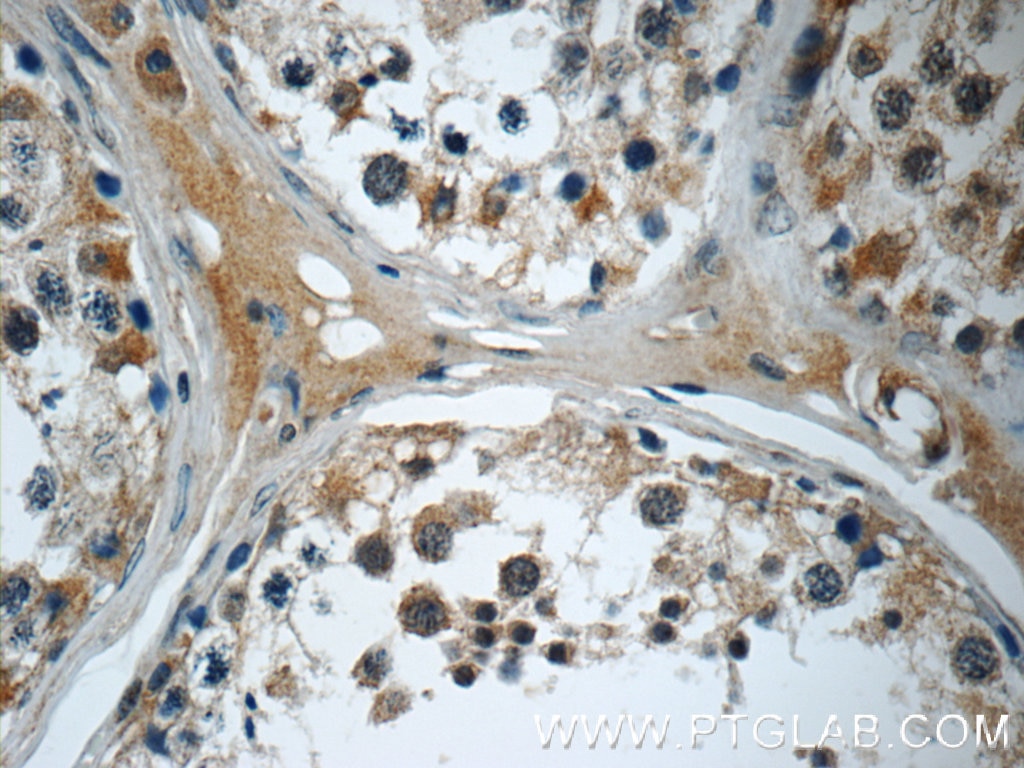TGF beta Receptor I Polyklonaler Antikörper
TGF beta Receptor I Polyklonal Antikörper für ELISA
Wirt / Isotyp
Kaninchen / IgG
Getestete Reaktivität
human, Maus
Anwendung
WB, IHC,ELISA
Konjugation
Unkonjugiert
Kat-Nr. : 55391-1-AP
Synonyme
Galerie der Validierungsdaten
Geprüfte Anwendungen
Empfohlene Verdünnung
| Anwendung | Verdünnung |
|---|---|
| It is recommended that this reagent should be titrated in each testing system to obtain optimal results. | |
| Sample-dependent, check data in validation data gallery | |
Veröffentlichte Anwendungen
| WB | See 4 publications below |
| IHC | See 1 publications below |
Produktinformation
55391-1-AP bindet in WB, IHC,ELISA TGF beta Receptor I und zeigt Reaktivität mit human, Maus
| Getestete Reaktivität | human, Maus |
| In Publikationen genannte Reaktivität | human, Maus |
| Wirt / Isotyp | Kaninchen / IgG |
| Klonalität | Polyklonal |
| Typ | Antikörper |
| Immunogen | Peptid |
| Vollständiger Name | transforming growth factor, beta receptor 1 |
| Berechnetes Molekulargewicht | 56 kDa |
| Beobachtetes Molekulargewicht | 56 kDa |
| GenBank-Zugangsnummer | NM_004612 |
| Gene symbol | TGFBR1 |
| Gene ID (NCBI) | 7046 |
| Konjugation | Unkonjugiert |
| Form | Liquid |
| Reinigungsmethode | Antigen-Affinitätsreinigung |
| Lagerungspuffer | PBS mit 0.02% Natriumazid und 50% Glycerin pH 7.3. |
| Lagerungsbedingungen | Bei -20℃ lagern. Aliquotieren ist bei -20oC Lagerung nicht notwendig. 20ul Größen enthalten 0,1% BSA. |
Publikationen
| Species | Application | Title |
|---|---|---|
Oncogene MSC-regulated lncRNA MACC1-AS1 promotes stemness and chemoresistance through fatty acid oxidation in gastric cancer. | ||
J Cell Mol Med Autophagy promotes fibrosis and apoptosis in the peritoneum during long-term peritoneal dialysis. | ||
Exp Parasitol Lentivirus-mediated over-expression of let-7b microRNA suppresses hepatic fibrosis in the mouse infected with Schistosoma japonicum. | ||
EBioMedicine POH1 contributes to hyperactivation of TGF-β signaling and facilitates hepatocellular carcinoma metastasis through deubiquitinating TGF-β receptors and caveolin-1. |

